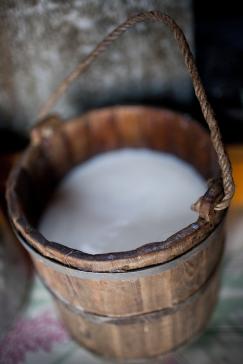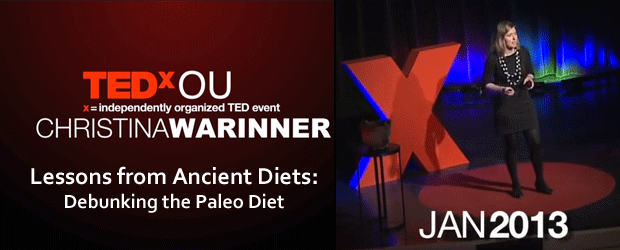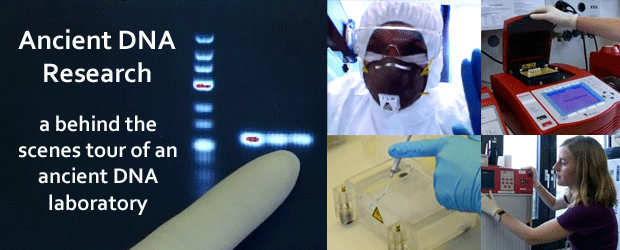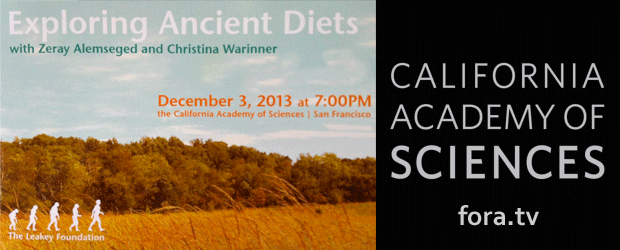Dairying and Adaptive Evolution in Prehistory
Milk is a food of major, global importance. This collaborative research project pursues a multi-disciplinary and multi-proxy approach to reconstruct the emergence, transformation and spread of ancient dairying, and the co-evolution of dairying practices and lactase persistence.
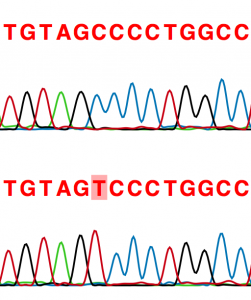
Milk is a major food of global economic importance. Humans have exploited animal milk as a food resource for at least 8500 years, and in order to overcome milk indigestibility during adulthood many populations have developed cultural practices to reduce the lactose content of milk. Additionally, some populations have evolved lactase persistence (LP), a genetic trait that enables continued lactose digestion after infancy. Today, these adaptations are most evident in Eurasia and Africa, but the origins, spread, and scale of dairying in the past, and the role of human practices in driving adaptive evolution remain poorly understood. Current lines of evidence, such as lipid isotopic ratios of pottery residues, faunal mortality profiles, and LP allele frequencies, imply a complex history of dairying at the level of populations. However, in order to understand how, where, and when past humans consumed milk products, it is necessary to link evidence of consumption directly to individuals and their dairy livestock.

Our research pursues a multi-disciplinary and multi-proxy approach to reconstruct the emergence, transformation and spread of ancient dairying, and the co-evolution of dairying practices and lactase persistence. Collaborative research bringing together the Department of Archaeogenetics and the Department of Archaeology applies archaeological, genetic, proteomic, and stable isotope methods to reconstruct dairying history, drawing on cutting-edge new methodologies and novel computational approaches. For example, using protein tandem mass spectrometry, our research focuses on the direct detection of the milk whey protein β-lactoglobulin (BLG) in prehistoric human dental calculus.
BLG is a species-specific biomarker of dairy consumption, and thus far we have identified individuals consuming cattle, sheep, and goat milk products as far back as the Bronze Age in Europe and western Asia. Applying this technique to more recent populations, we have also been able to document and confirm major historical dietary shifts. For example, when we applied this method to Greenland’s medieval Norse colonies, a population known for its extreme reliance on dairy products, we observed a decline of this biomarker in the dental calculus of Norse Greenlanders consistent with diminished access to milk products leading up to the abandonment of the Norse Greenland colonies in the second half of the 15th century CE.
We are now expanding this research to temporally diverse populations in Europe and the Near East, Central Asia, South Asia, and Africa in order to directly test and refine multiple hypotheses regarding the origins and spread of dairying, and to resolve ongoing debates about the scale of dairying before the rise of genetic LP and the relative importance of sheep, goats, cattle and other livestock in early dairying economies.
Origins of Dairying in Ancient Europe Project
Europe is marked by rich and diverse cheese-making cultures. In this project we are characterizing the European transition from secondary product dairy consumption to modern dietary habits through direct detection of milk products by proteomic, isotopic, and metagenomic analyses of human dental calculus.
Europe is marked by its rich and diverse cheese-making cultures. The unique flavors, textures, and biological processes by which this diversity is achieved have all been codified by Protected Geographical Status for many European cheeses, some of which have been in production for thousands of years. The history of these cheesemaking industries is rooted in an important nutritional source for early Europeans, and set the stage for later adaptations for the consumption of whole milk. Whole milk, unlike many cheeses, has concentrations of the sugar lactose which are high enough to cause health issues for humans who lack the ability to process it efficiently.
 This ability is conferred by the persistence of the gene LCT into adulthood, a genetic feature that is highly prevalent in modern Europeans. These separate horizons — the advent of cheesemaking and the later addition of milk consumption — represent what has been called the two-step milk revolution. This project aims to characterize the European transition from secondary product dairy consumption to modern dietary habits through direct detection of milk and milk products by proteomic, isotopic, and metagenomic analyses of human dental calculus.
This ability is conferred by the persistence of the gene LCT into adulthood, a genetic feature that is highly prevalent in modern Europeans. These separate horizons — the advent of cheesemaking and the later addition of milk consumption — represent what has been called the two-step milk revolution. This project aims to characterize the European transition from secondary product dairy consumption to modern dietary habits through direct detection of milk and milk products by proteomic, isotopic, and metagenomic analyses of human dental calculus.
Origins of Dairying in Ancient Asia Project
What can calcified dental plaque tell us about the origins of dairying and adaptations for adult lactase persistence? Through proteomic analysis of human calculus deposits we can asses the presence/absence of milk proteins, determining which species contributed to the nutritional diversity of Central Asian populations in antiquity. Furthermore, aDNA studies can uncover whether these populations had specific adaptations for retaining the ability to digest lactose after childhood.
 The consumption of dairy in prehistoric Asian societies profoundly affected steppe populations. In addition to nutritional benefits, milk may have also provided an essential uncontaminated water source for pastoralists in marginal environments. Recent research has demonstrated the interconnectedness of Asia, Africa, the Near East, and Europe through the transmission of ideas and technology across Eurasia, across what would become the Silk Road, including the spread of animals, genes, and methods for milk production.
The consumption of dairy in prehistoric Asian societies profoundly affected steppe populations. In addition to nutritional benefits, milk may have also provided an essential uncontaminated water source for pastoralists in marginal environments. Recent research has demonstrated the interconnectedness of Asia, Africa, the Near East, and Europe through the transmission of ideas and technology across Eurasia, across what would become the Silk Road, including the spread of animals, genes, and methods for milk production.
The Origins of Dairying in Ancient Africa
When and how did early African populations first consume milk? By combining proteomic analyses and genomic research this project explores the diversity of early milk consumption practices in Africa, the role of milk in the diet and how this important foodstuff shaped the emergence of lactase persistence.
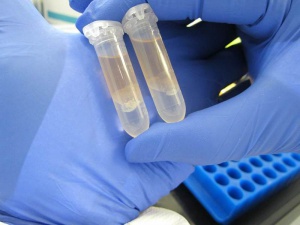 Animal milk has been an important food source for humans in various regions of Africa for millennia, but many questions still remain about the origins and spread of its consumption. This project will investigate milk consumption practices throughout Africa, as well as ancient genomic evidence for lactase persistence, exploring the relationship of these patterns to the complex geography of lactase persistence alleles currently observed across the continent. Whilst previous studies have explored sources of data like faunal mortality profiles, rock art depicting herding, and milk residue analyses in ceramics, this study will adopt novel methods in genomic research and ancient protein analysis in order to directly identify lactase persistence and milk consumption in African contexts.
Animal milk has been an important food source for humans in various regions of Africa for millennia, but many questions still remain about the origins and spread of its consumption. This project will investigate milk consumption practices throughout Africa, as well as ancient genomic evidence for lactase persistence, exploring the relationship of these patterns to the complex geography of lactase persistence alleles currently observed across the continent. Whilst previous studies have explored sources of data like faunal mortality profiles, rock art depicting herding, and milk residue analyses in ceramics, this study will adopt novel methods in genomic research and ancient protein analysis in order to directly identify lactase persistence and milk consumption in African contexts.
Related Publications
Taylor W, Pruvost M, Posth C, Rendu W, Krajcarz M, Brancaleoni G, Spengler R, Hermes T†, Schiavinato S, Hodgins G, Stahl R, Abdykanova A, Saltanat A, Fedorowicz S, Orlando L, Douka K, Krivoshapkin A, Jeong C, Warinner C, Shnaider S. (2021) Evidence for the early dispersal of Near Eastern domesticates into high mountain Central Asia. Nature Human Behavior. https://doi.org/10.1038/s41562-021-01083-y
Jeong C, Wang K, Wilkin S, Taylor WTT, Miller BK, Bemmann JH, Stahl R, Chiovelli C, Knolle F, Ulziibayar S, Khatanbaatar D, Erdenebaatar D, Erdenebat U, Ochir A, Ankhsanaa G, Vanchigdash C, Ochir B, Munkhbayar C, Tumen D, Kovalev A, Kradin N, Bazarov BA, Miyagashev DA, Konovalov PB, Zhambaltarova E, Ventresca Miller A, Haak W, Schiffels S, Krause J, Boivin N, Myagmar E, Hendy J, Warinner C. A dynamic 6,000-year genetic history of Eurasia’s Eastern Steppe. Cell 183, 1-15.
- Article translation in Mongolian: Евразийн Зүүн тал нутаг дахь 6000 жилийн динамик генетик түүх
Wilkin S, Ventresca Miller A, Taylor WTT, Miller BK, Hagan RW, Bleasdale M, Scott A, Gankhuyg S, Ramsøe A, Trachsel C, Nanni P, Grossmann J, Orlando L, Horton M, Stockhammer P, Myagmar E, Boivin N, Warinner C, Hendy J.(2020) Dairy pastoralism sustained Eastern Eurasian steppe populations for 5000 years. Nature Ecology and Evolution 4:346-355. https://doi.org/10.1038/s41559-020-1120-y.
- Article translation in Mongolian: Сүү, цагаан идээ голлосон мал аж ахуй Зүүн Евразийн тал нутгийн ард түмний амь зуулгыг 5000 жилийн турш залгуулжээ
Jeong C, Wilkin S, Amgalantugs T, Bouwman A, Taylor W, Bromage S, Tsolmon S, Hagan R, Trachsel C, Grossman J, Littleton J, Makarewicz C, Krigbaum J, Burri M, Irmer F, Scott A, Davaasambuu G, Wright J, Myagmar E, Boivin N, Robbeets M, Rühli F, Krause J, Frohlich B, Hendy J, Warinner C. (2018) Bronze Age population dynamics and the rise of dairy pastoralism on the eastern Eurasian steppe. Proceedings of the National Academy of Sciences USA. DOI: 10.1073/pnas.1813608115.
Hendy J, Warinner C, Barnes I, Bouwman A, Collins M, Fiddyment S, Fischer R, Hagan R, Hofman CA, Holst M, Chaves E, Klaus L, Larson G, Mackie M, McGrath K, Mundorff A, Radini A, Rao H, Trachsel C, Velsko I, Speller C. (2018) Proteomic evidence of dietary sources in ancient dental calculus. Proceedings of the Royal Society B 285: 20180977. DOI: 10.1098/rspb.2018.0977.
Hendy J, Welker F, Demarchi B, Speller C, Warinner C, Collins MJ. (2018) A Guide for Ancient Protein Research. Nature Ecology and Evolution. DOI: 10.1038/s41559-018-0510-x
Hendy J (2016). Archaeological Detection. In Oxford Companion to Cheese. Oxford University Press. ISBN 9780199330881
Hendy J, Bickle P, Copper M, Charlton S. (2016) Neolithic cheese making: experimental archaeology and public engagement with replica vessels. PAST: The Newsletter of the Prehistoric Society. Nov. 2016
Warinner C, Hendy J, Speller C, Cappellini E, Fischer R, Trachsel C, Arneborg J, Lynnerup N, Craig OE, Swallow DM, Fotakis A, Christensen RJ, Olsen J, Liebert A, Montalva N, Fiddyment S, Mackie M, Canci A, Bouwman A, Rühli F, Gilbert MTP, Collins MJ* (2014) Direct Evidence of Milk Consumption from Ancient Human Dental Calculus. Scientific Reports 4, 7104. doi:10.1038/srep07104.
Kruettli A, Bouwman A, Akguel G, Della Casa P, Ruehli F, Warinner C (2014). Ancient DNA analysis reveals high frequency of European lactase persistence allele (T-13910) in medieval Central Europe. PLoS ONE 9(1), e86251.
Learn More
 “Microbes on the Move: A Travelling Conference,” by the DairyCultures team
“Microbes on the Move: A Travelling Conference,” by the DairyCultures team
Songs From the Mongolian Steppe, 4 tracks
A collection of songs sung by our collaborators in rural Mongolia. Listen on Sound Cloud!
Kyrgyz Bonfire Songs, 19 tracks
This compilation features Kyrgyz songs recorded for the 2019 Microbes on the Move traveling conference during an evening spent at a bonfire in rural Kyrgyzstan. The list also includes one German and two Mongolian songs. Listen on Sound Cloud!
Philanthropy
 This project, in partnership with Charlotte Vad of the Khovsgol Dairy Project, works to support traditional nomadic dairy pastoralists in the Khovsgol Nuur region of northern Mongolia.
This project, in partnership with Charlotte Vad of the Khovsgol Dairy Project, works to support traditional nomadic dairy pastoralists in the Khovsgol Nuur region of northern Mongolia.

